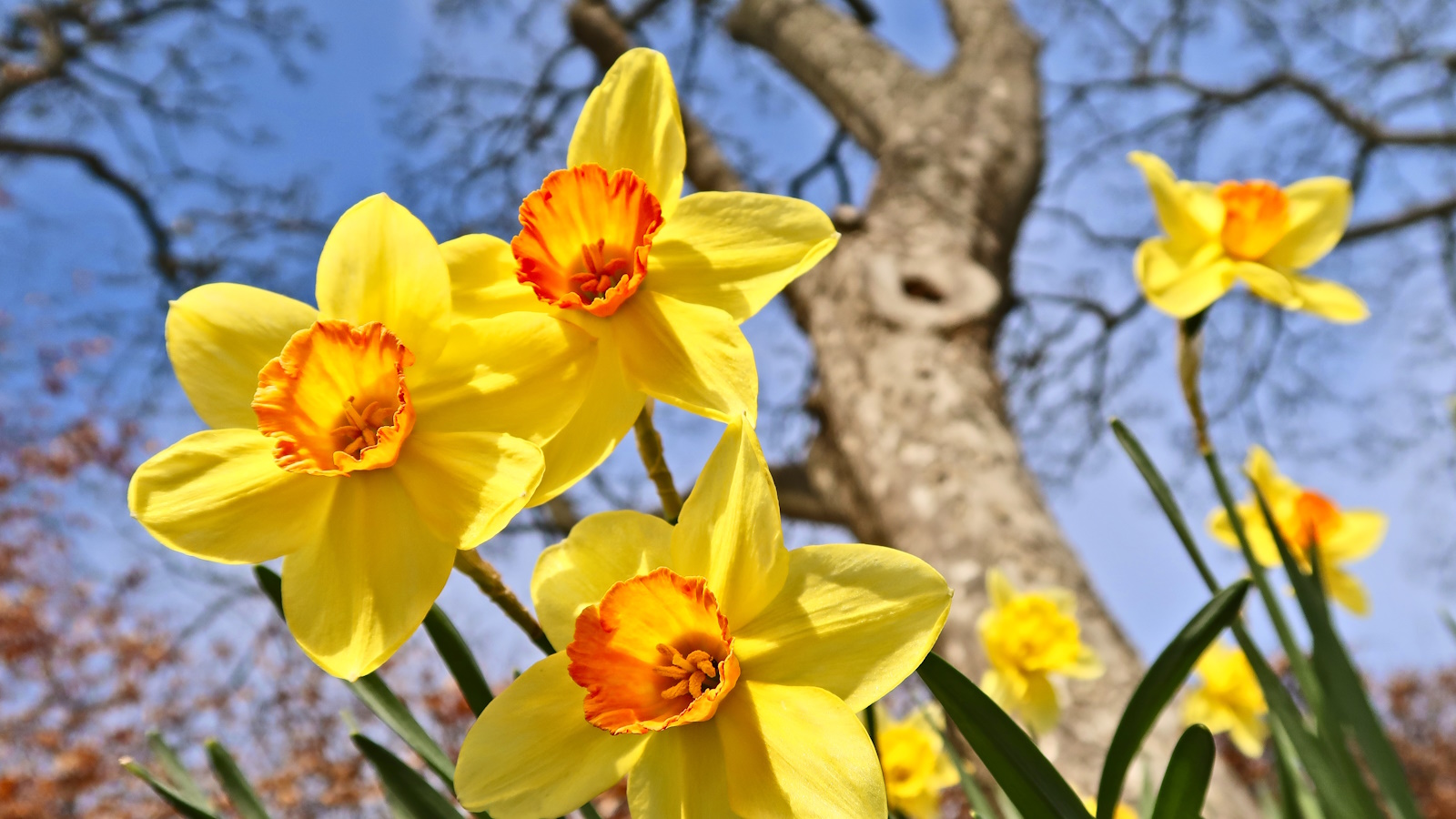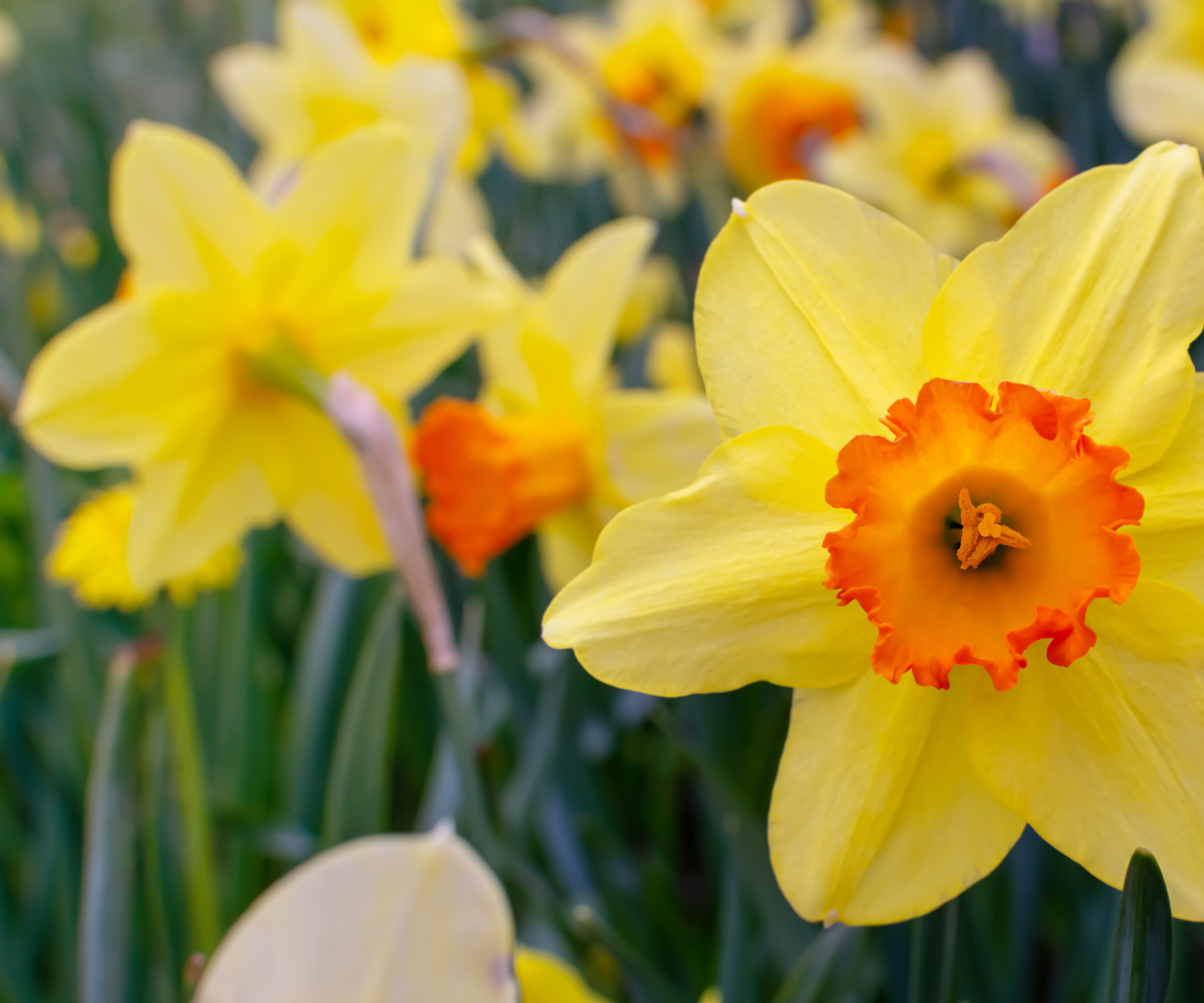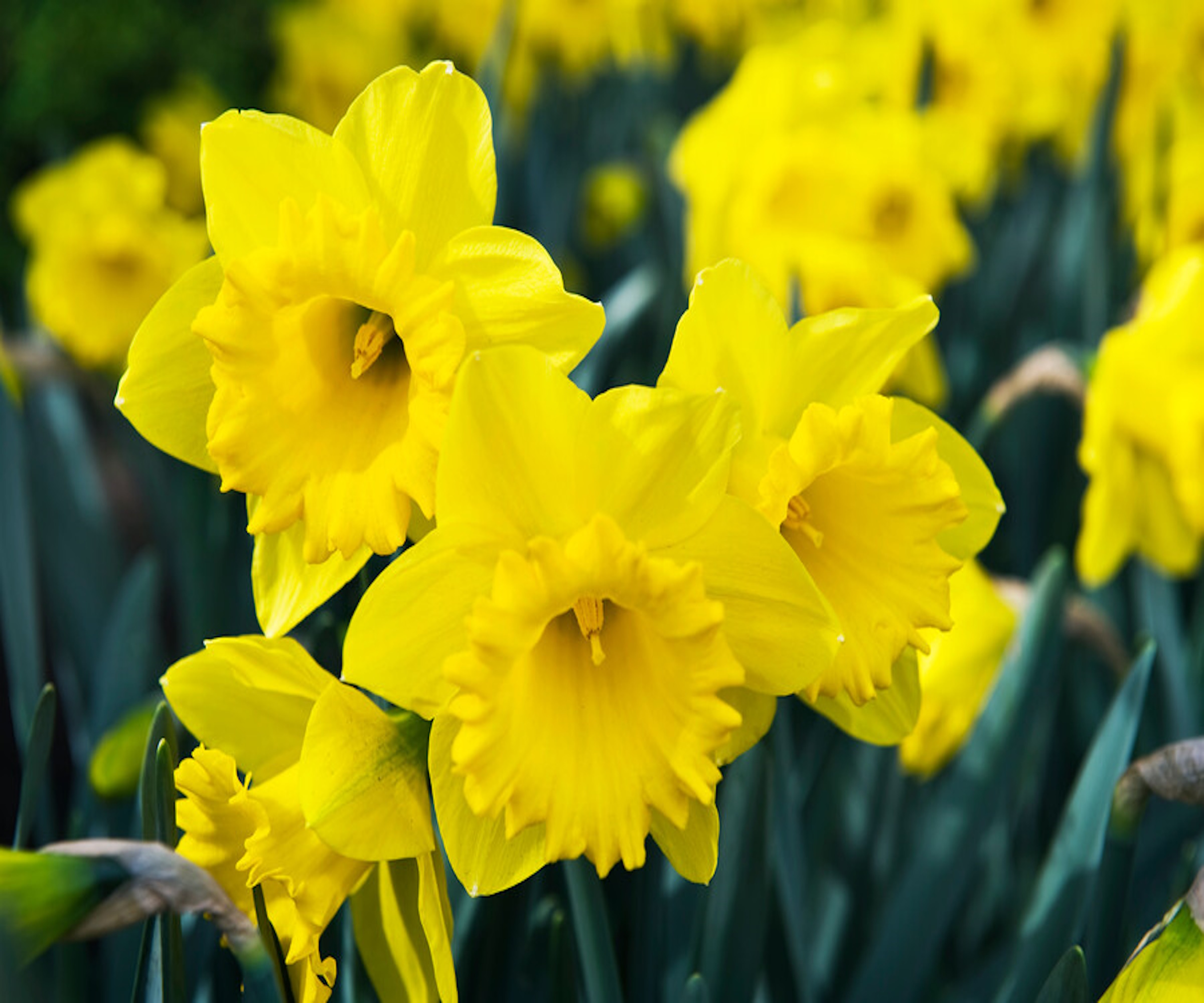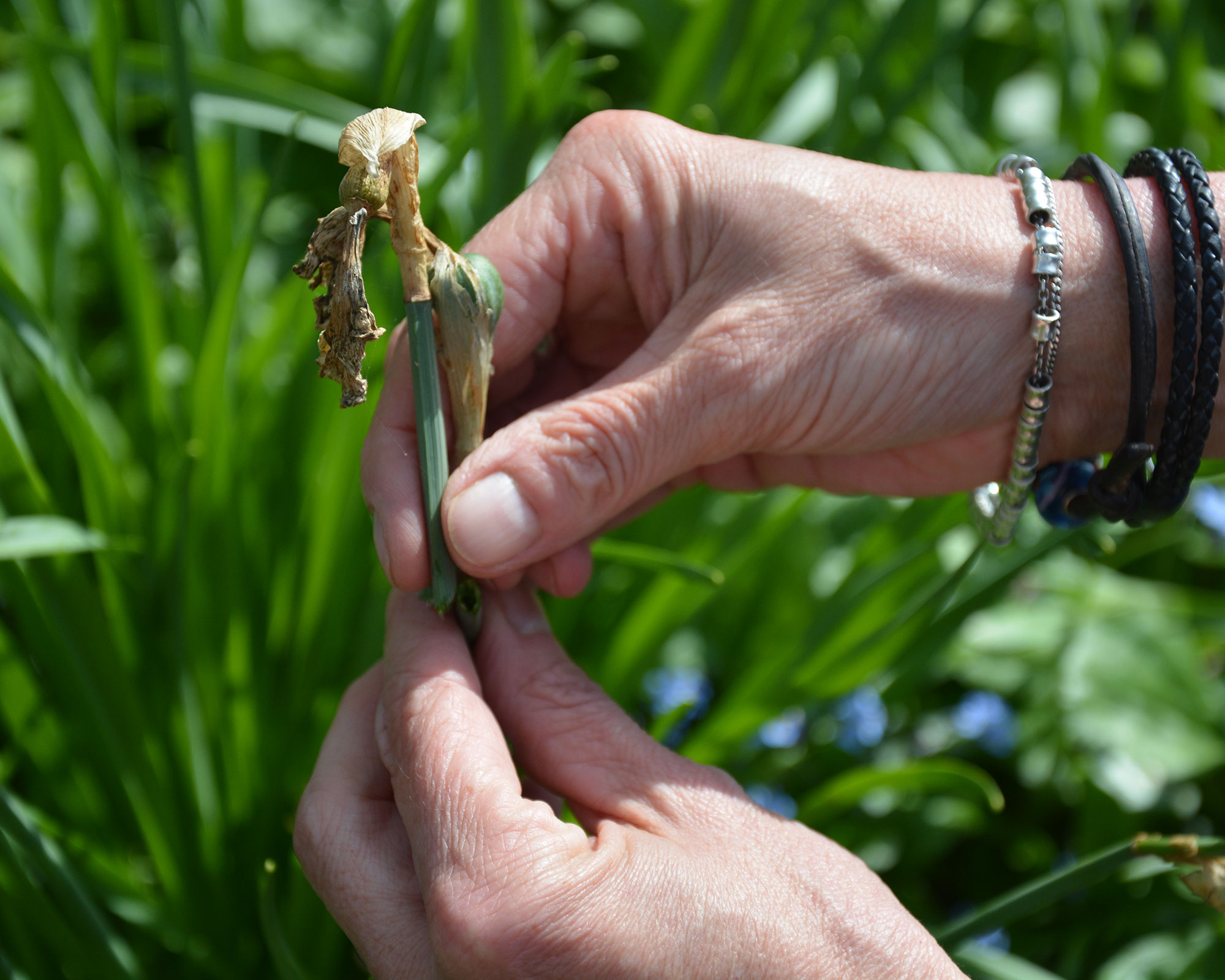How to deadhead daffodils – plus when and why to do it
Discover how to deadhead daffodils to help improve future flowering


Learning how to deadhead daffodils and narcissus when they start to fade after flowering is one of the gardener's most important late spring gardening jobs.
These early spring beauties are some of our most treasured plants, their glorious golden trumpets heralding the return of the sunny days of spring. We need to take care of them to make sure they flower well year after year.
After all, getting the most from your blooms doesn't end with knowing how to plant daffodil bulbs. I've grown many different varieties of narcissi my entire gardening life, and I have learnt over the years that they need care and attention even after they have finished flowering to help encourage blooms in subsequent years.

Why and how to deadhead daffodils
Deadheading daffodils removes the spent flowers to make plants look tidier and also to stop them forming seedheads, which wastes the plants’ precious energy. This energy needs to be fed back down to the bulb by the leaves and stems to help it grow and mature.
If seedheads are left on the stems to ripen, the plants may weaken and the bulbs will not grow and mature to provide bigger, better displays each year.
How to deadhead daffodils in spring

How you treat your daffodils after flowering will influence how well they perform the following year, so it’s important to get it right.
A vital job is removing the dying flower heads. Knowing how to deadhead daffodils may sound simple, but it is so important as it helps the bulbs to mature and flower well in subsequent springs.
Follow these simple tips for success:
- There is no need to remove the whole stem at its base as it has a value to the plant as it dies back naturally.
- Just pinch off the dead flower and the top inch or so of stalk, leaving the rest to photosynthesise and feed the rest of the plant as it dies back.
- Deadheading daffodils stops the plants wasting energy by making seed heads instead of returning it to the bulbs to prepare them for next year’s blooms.
When to deadhead daffodils

Removing dead daffodil flowerheads either by cutting or by hand stops the plant wasting energy
Gardeners should deadhead daffodils once the flowers fade, lose their color and start to go brown and crinkly. The same approach applies to other spring bulbs, for example, it is important to deadhead tulips to prevent energy from going into seed production. For tulips and daffodils, remove the dead flower, the little seedpod underneath and around an inch of stem.
Feeding daffodils after deadheading

You can help the process of daffodils returning energy to the bulbs by continuing to nourish the plants as they fade. Fertilize daffodils either with a fortnightly watering with liquid tomato fertilizer such as Espoma organic feed from Walmart, or an application of a general granular feed such as Jobe's Organics all-purpose fertilizer from Walmart, when you do your deadheading. This will also help the bulbs to bulk up and mature.
Leave the foliage alone to die back naturally, a process that takes around six weeks. After this point you may want to cut back daffodils in your borders, but definitely not before. Plants may look untidy as they wither away, but you can disguise them by planting evergreen perennials and later-flowering bulbs around them.
FAQs
What should I do with daffodil bulbs that haven't produced flowers?
If any daffodil bulbs have come up ‘blind’ and failed to flower,carefully dig them up to check they have not been attacked by pests or disease. You can do this at the same time as you are deadheading your other daffodils.
Discard any that appear diseased or pest-ridden as well as any that feel soft or smell bad. Replant the healthy remaining ones at three times their own depth, ideally somewhere sunny in enriched soil. Let them die back naturally, feeding them as they do.
If you've experienced similar problems after learning how and when to plant tulip bulbs, you can follow the same method as above for any tulip bulbs that fail to flower.
Should I tidy up the dying foliage on my daffodils?
In a word, no. When learning how to deadhead daffodils, the leaves should be left alone because the plant needs them to die back naturally to return energy to the bulb.
If you cut off the leaves after flowering, or even tie them in knots to make clumps look tidier in your flower bed, it stops the foliage refuelling the bulbs and you may not get as many flowers in your borders or spring container ideas next year.
Understanding how to deadhead daffodils is an essential part of your spring gardening checklist. If you want to get the most out of your flower beds, whether to keep them flowering for longer or to ensure wonderful displays next year, deadheading is a good practice to get into - especially when it comes to deadheading irises and roses.
Sign up to the Homes & Gardens newsletter
Design expertise in your inbox – from inspiring decorating ideas and beautiful celebrity homes to practical gardening advice and shopping round-ups.

Ruth is a Contributing Editor for Homes & Gardens, and formerly Gardening Editor of Amateur Gardening magazine. She is horticulturally trained, with a qualification from the Royal Horticultural Society. Her work for Amateur Gardening, the world's oldest weekly gardening publication, involved matching gardening tasks with each season, covering everything from sowing and planting, to pruning, taking cuttings, dealing with pests and diseases and keeping houseplants healthy. She is an expert in ornamental plants and edible crops, and everything she writes about and photographs is in her own garden, that has been a work in progress since her family moved there in 2012.
-
 Do cleaning products expire? Professional cleaners warn time could make them ‘less effective, and in some cases, irritating to use’
Do cleaning products expire? Professional cleaners warn time could make them ‘less effective, and in some cases, irritating to use’For the best results, it pays to stay on top of the timeline of your cleaning products
By Chiana Dickson Published
-
 7 of the best tomatoes for growing in pots - expert growers pick their top varieties ideal for large harvests from containers
7 of the best tomatoes for growing in pots - expert growers pick their top varieties ideal for large harvests from containersYou can enjoy bumper homegrown harvests in small spaces
By Drew Swainston Published